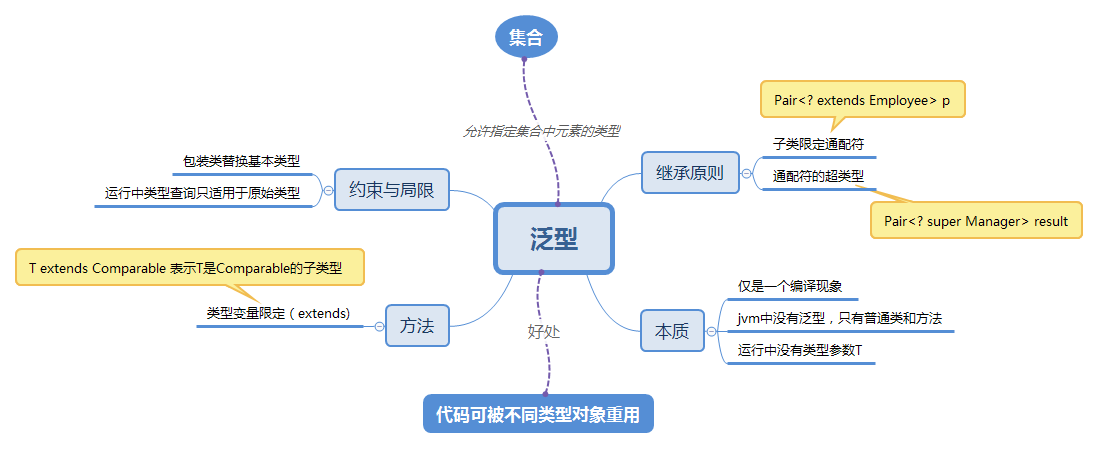201521123013 《Java程序设计》第8周学习总结
1. 本章学习总结

2. 书面作业
Q1.List中指定元素的删除(题目4-1)
1.1 实验总结
while(list.contains(str))
list.remove(str);

Q2.统计文字中的单词数量并按出现次数排序(题目5-3)
2.1 伪代码(简单写出大体步骤)
ArrayList<Map.Entry<String,Integer>> wordlist=new ArrayList<Map.Entry<String,Integer>>(mapword.entrySet());
Collections.sort(wordlist,(o1,o2)->{
if(o1.getValue()!=o2.getValue()){
return o2.getValue()-o1.getValue();
}
else return o1.getKey().compareTo(o2.getKey());}
);
2.2 实验总结
- 使用HashMap,先将单词存入
ArrayList<Map.Entry<String,Integer>> wordlist,在编写lambd表达式进行排序(跟之前编写name、age排序类似)。或者使用TreeMap因为其已经排序了,所以只要再对value进行排序。
Q3.倒排索引(题目5-4)
3.1 截图你的提交结果(出现学号)

3.2 伪代码(简单写出大体步骤)
//建立索引
map.put(linenum, str);//将每行句子存起来
Scanner str1=new Scanner(str);
while(str1.hasNext()){
String word=str1.next();
if(!mapword.containsKey(word)){//如果不存在word,则linenum添加到set中,并put到mapword
TreeSet<Integer> set=new TreeSet<Integer>();
set.add(linenum);
mapword.put(word, set);
}
else{//存在,则在值集合中add新的一行
mapword.get(word).add(linenum);
}
}
linenum++;//下一行
//查找,主要判断单词是否存在mapword中或者是否出现交集,如果没有则获取单词对应的行
TreeSet<Integer> set=new TreeSet<Integer>();
if (!mapword.containsKey(strarr[j])||set.retainAll(mapword.get(strarr[j]))) {
break;
} else {
set=mapword.get(strarr[j]);
}
if(set.isEmpty()){
System.out.println("found 0 results");
}
else{
System.out.println(set);
for(Integer o:set){
System.out.println("line "+o+":"+map.get(o));//根据行,找到相应句子
}
}
3.3 实验总结
- 两个map,
TreeMap<String,TreeSet<Integer>>,Map<Integer,String>map,一个是单词到行的映射,一个是行到句子的映射。 - 这题主要是查找比较难写,本来是跟建索引一样用扫描器的方式获取word,然后对其进行判断word是否存在mapword中或者是否出现交集,如果没有则获取单词对应的行。但是输出结果虽然一样,但是再PTA中提交显示是错误的,后面听同学的方法用split获取就可以了。
Scanner str1=new Scanner(str);
while(str1.hasNext()){
String word=str1.next();
if (!mapword.containsKey(word)||set.retainAll(mapword.get(word))) {
break;
} else {
set=mapword.get(word);
}
}
***
**Q4.Stream与Lambda编写一个Student类,属性为:**
```java
private Long id;
private String name;
private int age;
private Gender gender;//枚举类型
private boolean joinsACM; //是否参加过ACM比赛
4.1 使用传统方法编写一个方法,将id>10,name为zhang, age>20, gender为女,参加过ACM比赛的学生筛选出来,放入新的集合。在main中调用,然后输出结果。
public static void main(String[] args) {
ArrayList<Student> list=new ArrayList<Student>();
list.add(new Student(11L,"zhang",21,Gender.female,true));
list.add(new Student(9L,"li",21,Gender.male,true));
list.add(new Student(22L,"wang",51,Gender.male,true));
list.add(new Student(45L,"zhang",25,Gender.female,true));
ArrayList<Student> list1 = new ArrayList<Student>();
for (Student student : list) {
if (student.getId() > 10L && student.getName().equals("zhang") && student.getAge() > 20 && student.getGender().equals(Gender.female) && student.isJoinsACM()) {
list1.add(student);
System.out.println(student);
}
}
}
- 截图如下:

4.2 使用java8中的stream(), filter(), collect()编写功能同4.1的函数,并测试。
ArrayList<Student> list1 = (ArrayList<Student>) list.Stream()
.filter(student -> (student.getId() > 10L && student.getName().equals("zhang")
&& student.getAge() > 20 &&
student.getGender().equals(Gender.female)
&& student.isJoinsACM()))
.collect(Collectors.toList());
System.out.println(list1);
- 截图如下:

4.3 构建测试集合的时候,除了正常的Student对象,再往集合中添加一些null,然后重新改写4.2,使其不出现异常。
ArrayList<Student> list1 = (ArrayList<Student>) list.lStream()
.filter(student -> student != null && (student.getId() > 10L && student.getName().equals("zhang")
&& student.getAge() > 20 &&
student.getGender().equals(Gender.female)
&& student.isJoinsACM()))
.collect(Collectors.toList());
- 截图如下:

Q5.泛型类:GeneralStack(题目5-5)
5.1 截图你的提交结果(出现学号)

5.2 GeneralStack接口的代码
interface GeneralStack<T>{
public T push(T item);
public T pop();
public T peek();
public boolean empty();
public int size();
}
5.3 结合本题,说明泛型有什么好处
- 泛型允许指定集合中元素的类型,在之前的实验中我们只能建StringStack或者IntegerStack等已经确定类型的栈,在我们需要使用多种类型栈的时候就会出现大量代码,所以可以通过将栈泛型化,可以直接创建多个不同类型的栈,减少了代码量,同时减少了很多强制转化,避免更多出错的可能。
Q6.6.泛型方法 基础参考文件GenericMain,在此文件上进行修改。
6.1 编写方法max,该方法可以返回List中所有元素的最大值。List中的元素必须实现Comparable接口。编写的max方法需使得String max = max(strList)可以运行成功,其中strList为List
public class GenericMain {
public static void main(String[] args) {
List<String>strList=new ArrayList<String>();
List<Integer>intList=new ArrayList<Integer>();
strList.add("fds");strList.add("fda"); strList.add("f12");
intList.add(33); intList.add(25); intList.add(62);
String max = max(strList);
Integer maxInt = max(intList);
System.out.println("String max="+max+" "+"Integer max="+maxInt);
}
public static <T extends Comparable<T>> T max(List<T> list){
T max=list.get(0);
for (int i = 0; i < list.size(); i++) {
if(list.get(i).compareTo(max)>0){
max=list.get(i);
}
}
return max;
}
}
- 截图如下:

6.2 选做:现有User类,其子类为StuUser,且均实现了Comparable接口。编写方法max1,基本功能同6.1,并使得max1(stuList);可以运行成功,其中stuList为List
public class GenericMain {
public static void main(String[] args) {
List<StuUser>stuList=new ArrayList<StuUser>();
stuList.add(new StuUser(12,"11"));
stuList.add(new StuUser(32,"12"));
stuList.add(new StuUser(33,"13"));
System.out.println("max="+max1(stuList));
}
public static <StuUser extends Comparable<T>> StuUser max1(List<StuUser> list){
StuUser max=list.get(0);
for (int i = 0; i < list.size(); i++) {
if(list.get(i).compareTo(max)>0){
max=list.get(i);
}
}
return max;
}
}
- 截图如下:

3. PTA实验总结及码云上代码提交记录
3.1本周Commit历史截图

3.2PTA实验




